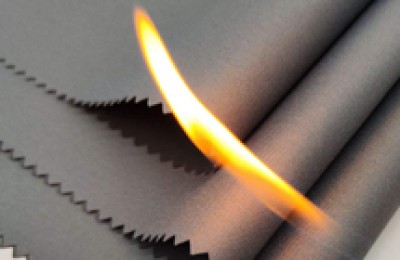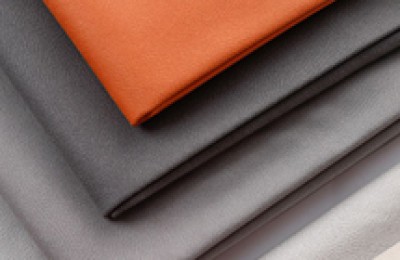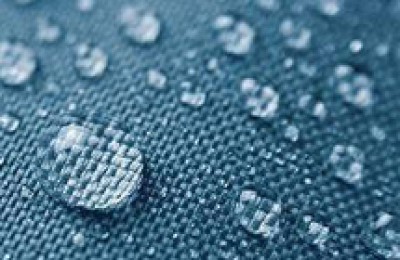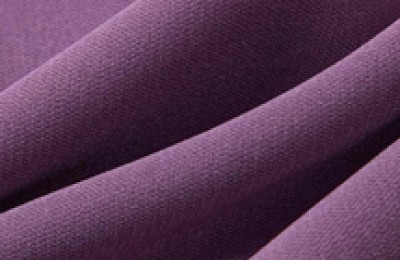Scouring
After desizing, although most of the sizing and some natural The impurities have been removed, but a small amount of slurry and most of the natural impurities still remain. The presence of these impurities not only makes the cloth surface yellow and affects the appearance of the fabric, but also reduces the hygroscopicity of the cotton fabric and poor wetting permeability. It hinders the smooth progress of subsequent processing. Therefore, after desizing, most cotton fabrics need to be scoured to varying degrees to remove most of the natural impurities and residual slurry, and to refine and purify the cellulose, thereby improving the appearance of the fabric and increasing the hygroscopicity of the fabric. Post-printing and dyeing processing.
Scouring principle
Scouring is a very complicated process , this process is often accompanied by multiple effects such as hydrolysis, saponification, emulsification, metathesis, dissolution, etc., and the impurities in the cotton fiber are removed by means of these effects.
1. Removal of pectin
Pectin removal The main components are the derivatives of pectic acid, such as calcium and magnesium salts of pectic acid and methyl pectate. They can form ester bonds with the hydroxyl groups in the cellulose macromolecules, thereby blocking the hydroxyl groups on the cellulose macromolecule chains and affecting their wettability. At the same time, the presence of pectin causes the fiber to turn yellow, affecting the appearance of the fiber and the effect of post-printing and dyeing processing.
Under the action of caustic soda, pectin is hydrolyzed on the one hand to produce pectic acid and then converted into pectic acid sodium salt; on the other hand, part of the pectin undergoes molecular chain degeneration. fracture, thus improving the solubility of pectin in water and achieving better removal effect.
The content of pectin can be quantitatively measured with oxalic acid or ammonium citrate, or cotton fiber can be treated with copper sulfate to turn it into copper pectate, which can then react with yellow blood salts , generate a rose red color, and make corresponding calculations to obtain the content. In addition, magenta or methylene can be used for qualitative inspection.
2. Removal of waxy substances
In cotton fibers , various impurities that are insoluble in water but soluble in organic solvents are collectively called waxy substances. The waxy substance in cotton fiber is a mixture containing a variety of components, including aliphatic higher monohydric alcohols, higher monohydric alcohol esters, free fatty acids, etc. Waxy substances generally exist on the surface of cotton fibers, affecting the wettability of the fibers, but the wettability of cotton fibers is not completely proportional to its content.
This is because the wettability of cotton fiber is not only related to the content of waxy substances, but also to its distribution state on the fiber. If it forms a continuous waxy substance covering film on the fiber surface, it will not be easily wetted. Once a certain method is used to destroy this continuous covering film, the fiber will have a certain degree of water absorption regardless of whether the waxy substance is removed or not.
Substances such as fatty acids in waxy substances are saponified and dissolved in hot dilute caustic soda solution, and can be removed by washing with water. The remaining higher monohydric alcohols, hydrocarbons, etc. are relatively stable in chemical properties and require emulsification to remove them. Commonly used emulsifiers include detergents, Pingpingjia, etc. In addition, the saponified products of fatty acids are also one of the important sources of emulsifiers during scouring.
After scouring, the hygroscopicity of cotton fabrics has been greatly improved. In this regard, the fabric becomes waxy The reason for the decrease in substance content is, on the other hand, related to the destruction of the waxy substance coating on the fiber surface (which can be observed through a microscope).
The presence of waxy substances can make fabrics have a soft feel and facilitate processing such as fluffing. Therefore, in the processing of some fabrics such as flannel, there is no need to remove too much wax. quality, as long as it is lightly cooked.
3. Removal of chlorine-containing substances
Chlorine-containing substances in cotton fibers Nitrogen-containing substances mainly exist in the form of proteins in the innermost cells of the fiber. Its content decreases with the increase of dimension maturity. Under the action of hot caustic soda, the amide bonds in the protein molecules are hydrolytically broken, producing soluble amino acid sodium salts and being removed.
4. Ash removal
The main component of ash is inorganic Salts, including potassium, sodium, calcium, magnesium and manganese salts of silicic acid, carbonic acid, hydrochloric acid, sulfuric acid and phosphoric acid, and iron oxide. The content and composition of ash vary with the maturity of the fiber. The ash content of mature cotton fiber accounts for about 1%-2%.
The presence of inorganic salts has a certain impact on the hygroscopicity, whiteness and feel of the fiber and should be removed. The water-soluble inorganic salts in the ash are removed during the scouring and water washing process, while the insoluble inorganic salts are removed by pickling and water washing.
5. Removal of pigments
Natural colored pigments in cotton fibers Substances are collectively called pigments. Scouring has very little effect on pigment removal, and most of it is removed during the bleaching process.
6. Removal of cottonseed husks
Cottonseed husks are mainly made of wood It is composed of proteins, tannins, cellulose, polysaccharides and a small amount of protein, oil and minerals, of which lignin is the main component. During the scouring process, the contents of cottonseed hullsVitamins hardly change at all, while other components such as oils, tannins, proteins and some polysaccharides can interact with caustic soda to increase their solubility in water and achieve the purpose of removal.
As for lignin, on the one hand, due to the presence of phenolic hydroxyl groups in the molecular structure, it can react with alkali solution during the scouring process The action causes the relative molecular mass to decrease, thereby increasing the solubility in caustic soda and being removed; on the other hand, under the action of high-temperature caustic soda liquid for a long time, the cottonseeds swell and become soft, and the adhesion to the fabric is reduced. At the same time, because some components have been disintegrated, they will fall off the fabric after a certain mechanical action. In addition, adding sodium bisulfite to the scouring liquid can convert lignin into lignin sulfonate sodium salt that is easily soluble in water and be removed. Generally speaking, cottonseed hulls are difficult to remove during the scouring process, but they can be further removed during the subsequent bleaching process.
</p






